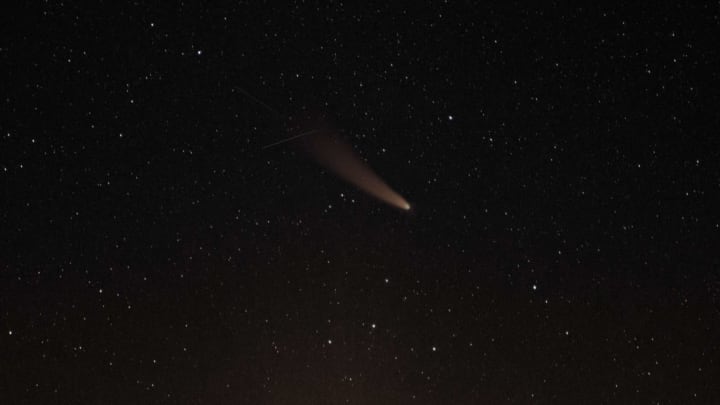In February 2020, the Minor Planet Center reported that a mini-moon had been orbiting the Earth for several years undetected. Now, astronomers are preparing for the arrival of a potential new mini-moon in the coming weeks. As EarthSky reports, a mysterious object is expected to enter the planet's orbit in October 2020 and stick around until May 2021.
Astronomers spotted the object on September 17, 2020, using the Pan-STARRS1 telescope in Maui, Hawaii. Dubbed 2020 SO, it's traveling toward Earth at just 1880 mph. The low speed combined with its current trajectory points to the object getting caught in the planet's gravitational pull some time next month.
In the loosest definition of the term, a moon is any natural satellite trapped in a planet's orbit. That's why the rocky object spotted circling the Earth earlier this year was dubbed a "second moon" even though it's the size of a car. Though 2020 SO is on track to become a satellite, it may not be natural. It's been designated an asteroid, but astronomers have reason to believe it's actually a piece of space junk leftover from a 50-year-old rocket launch.
The object measures approximately 20 to 45 feet across, making it a plausible match for the 41-foot Atlas LV-3C Centaur-D rocket. On September 20, 1966, NASA sent an uncrewed lunar lander to space aboard an Atlas LV-3C Centaur-D. One of its thrusters didn't ignite, and this caused the spacecraft to crash-land on the moon. It's possible that flight controllers lost track of the rocket during the accident and it's been drifting through the solar system in the years since. The object's low speed and its Earth-like orbit around the sun (completing a revolution once every 1.06 years) would fit this scenario.
Whether our new visitor will be a true mini-moon or some manmade space debris making a return trip is still unclear. Experts hope to learn more about the nature of the object by studying the light reflected off its surface as it gets closer to Earth.
[h/t EarthSky]
